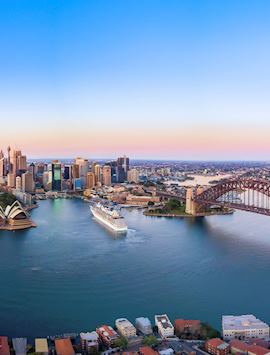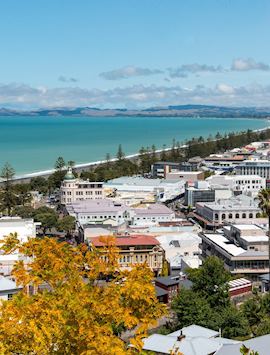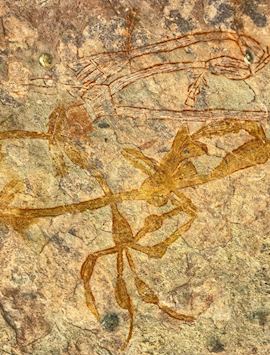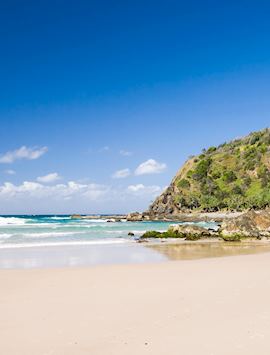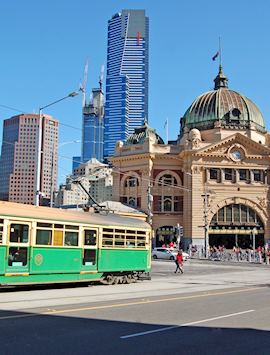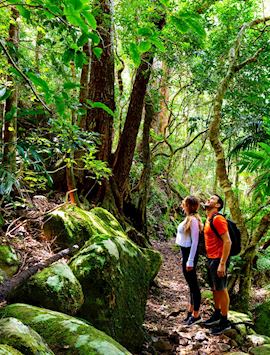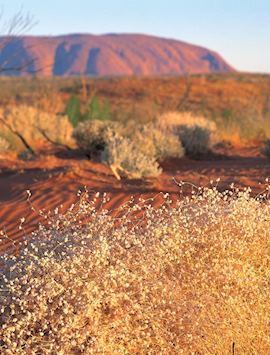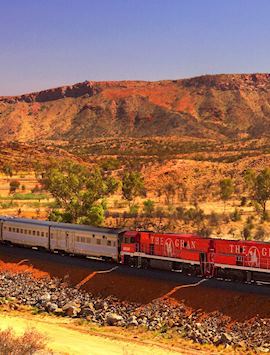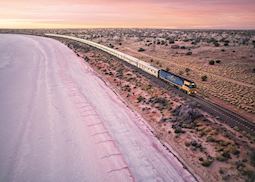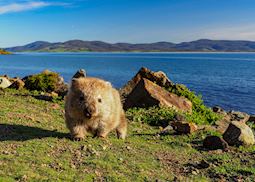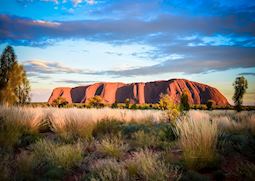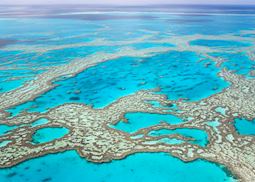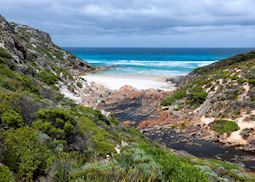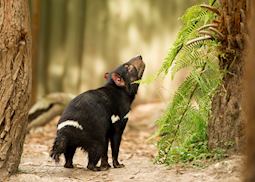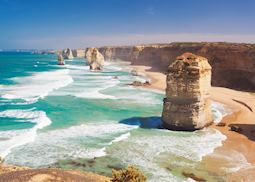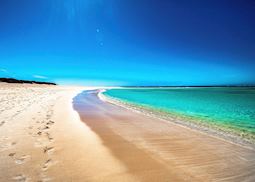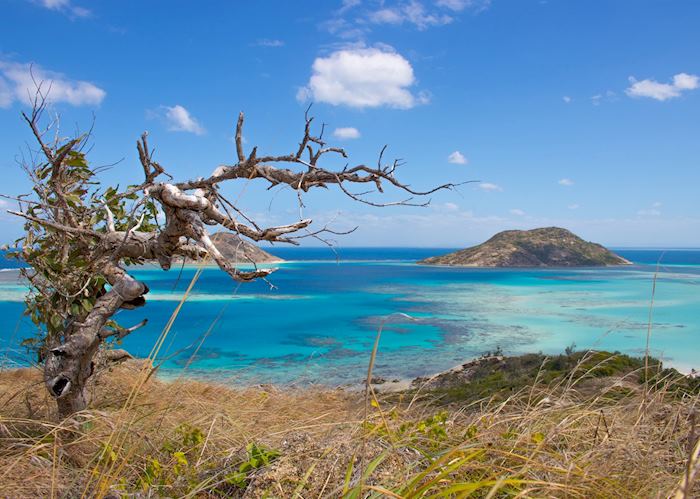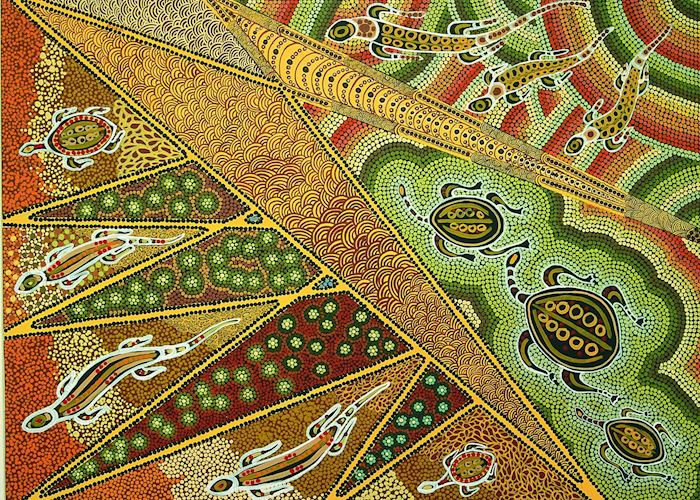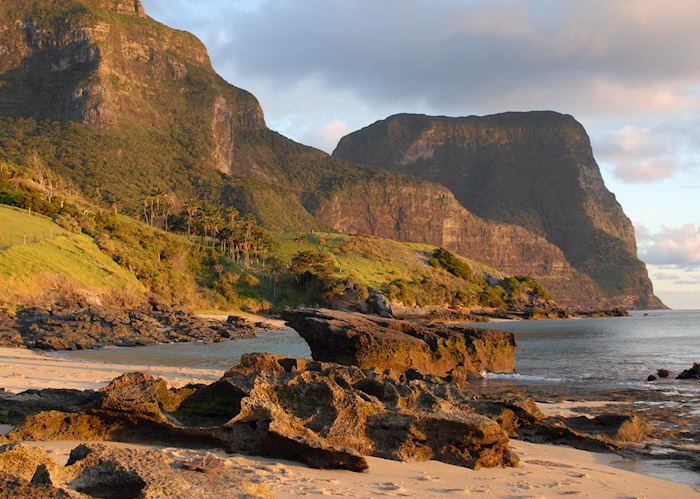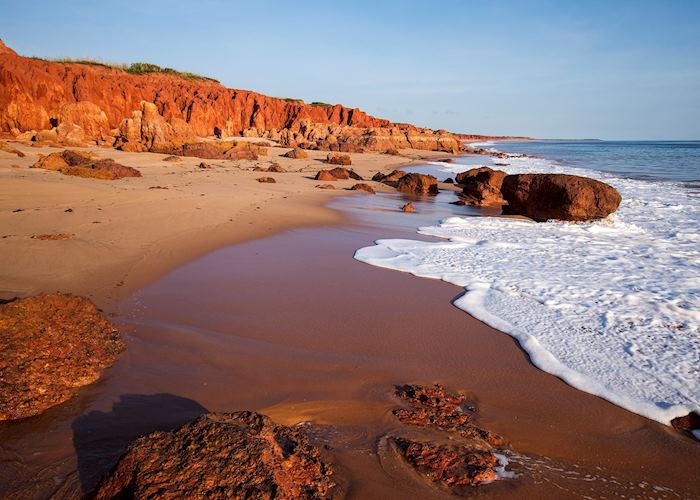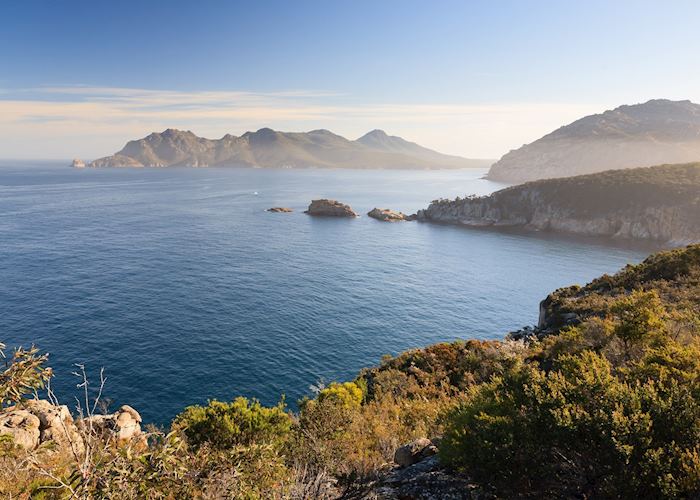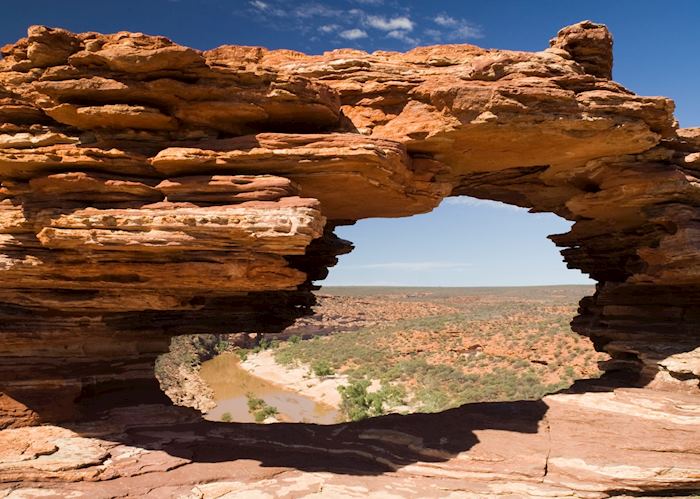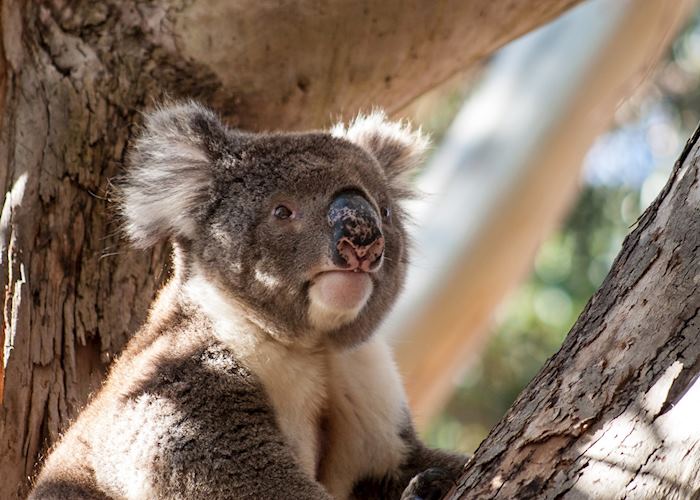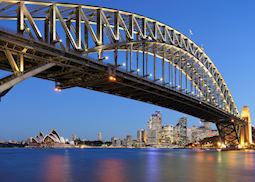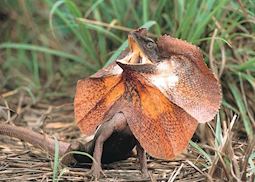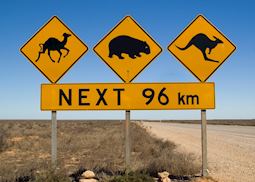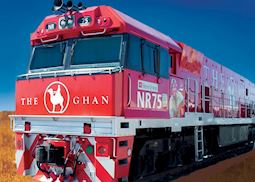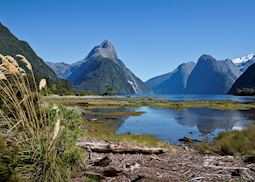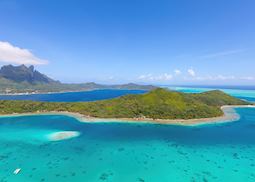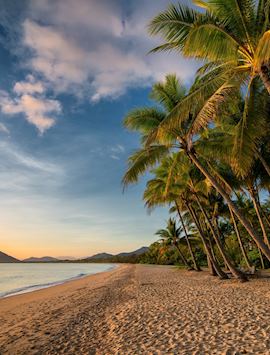
A continent in its own right, Australia’s landscapes range from tropical rainforests to the red deserts of the Outback via vineyards, surf beaches and cosmopolitan cities. Thanks to an efficient network of internal flights, you can experience many of these places within the same trip.
We’ve found some of the biggest Australian myths to be true: this really is a land of easy-going attitudes where active, outdoor lifestyles are celebrated and natural wonders abound. We can recommend how to make the most out of your Australia holiday, whether you’re interested in snorkelling the Great Barrier Reef, heading out on a bush walk with an Aboriginal guide, or simply looking for the best seafood in Perth. You can also cruise through the Kimberley, in northernmost Australia, visiting multi-tiered waterfalls and exploring sandstone caves as you navigate this remote, fractured coastline.
Reduced fares currently available through our airline partners
We have a number of reduced fares available with selected airline partners. Click below for further details on booking and travel periods.
View offersSuggested tours for Australia
From the familiar landmarks of Sydney, to the diverse marine life of the Great Barrier Reef and the red dirt roads of the Outback, each region of Australia has something different to offer. We can create a tour that combines the country's renowned highlights, alongside lesser-known experiences.
Suggested activities for Australia
Climb the Sydney Harbour Bridge, dine under the stars at Uluru, or snorkel with whale sharks in the Ningaloo Reef. Whatever piques your interest, we'll craft a trip that brims with hand-picked experiences to suit you.
-
The Indian Pacific train — Sydney to Perth ![The Indian Pacific]()
The Indian Pacific train — Sydney to Perth
PerthThe Indian Pacific train — Sydney to Perth
As the name implies, The Indian Pacific links two oceans in one of the world’s longest and greatest train journeys. Travelling from Sydney to Perth, or vice versa, it covers a distance of 2,720 miles over three nights.
View details -
Kakadu & Arnhem land safari — 4 days ![Ubirr rock at sunset]()
Kakadu & Arnhem land safari — 4 days
Kakadu National ParkKakadu & Arnhem land safari — 4 days
Visit Kakadu's ancient rock art galleries and enjoy bushwalking in unspoiled country, swim in clear waters at the base of towering red ochre escarpment cliffs, cruise on a tranquil billabong full of saltwater crocodiles, and perhaps visit Arnhem Land to view Aboriginal rock art galleries, with an Aboriginal guide on hand to provide explanation and interpretation.
View details -
Maria Island walk — 4 days ![Wombat on Maria Island, Tasmania]()
Maria Island walk — 4 days
Maria Island National ParkMaria Island walk — 4 days
This outstanding four day guided walk is the most awarded tourism experience in the history of the Gourmet Traveller Travel Awards. Based on a beautiful island national park, the walk is a delightful blend of rare Tasmanian wildlife, convict heritage, elegant accommodation and gourmet dining.
View details
Why travel with Audley?
- 100% tailor-made tours
- Fully protected travel
- Established for over 25 years
- 98% of our clients would recommend us
Best time to visit
Our specialists advise on the best months to visit Australia, including information about climate, events and festivals.
Request our brochure
Covering all seven continents, The World Your Way shows you how you can see the world with us. It features trip ideas from our specialists alongside hand-picked stays and experiences, and introduces our approach to creating meaningful travel experiences.

Useful information for planning your holiday in Australia
Australians speak English, and although there are some definite peculiarities in the vernacular from state to state, it is easy to communicate once you have adjusted to the laconic and sometimes coarse and playful lingo. Indigenous Australians also speak a variety of native aboriginal languages that number in the hundreds.
The official currency of Australia is the Australian dollar. You will be able to access Australian currency from Maestro and Cirrus cash point machines [ATMs] as long as you have a four-digit pin-code.
Tipping is not generally a custom in Australia. Most Australians will either round the amount up or simply leave the change. In more formal places, it is becoming customary to leave about 10% if you feel the service is worthy.
For the latest travel advice for Australia, including entry requirements, health information, and the safety and security situation, please refer to the Foreign, Commonwealth & Development office website.
Australian culture is far more diverse than people expect, with the country boasting a rich tapestry of European and Asian influences. However, it is the Aboriginal culture that is uniquely Australian. In remote communities bear in mind that local people may speak English as a second or third language, may not read or write it at all and don't necessarily use the same verbal and body language as non-indigenous people. Always ask before photographing a person or group. Reputable tourism operators are sensitive to all these issues and plan their tours so as not to clash with cultural sensitivities.
From never-ending beaches and vibrant coral reefs to cosmopolitan city life and vast wilderness, there is so much that you can experience in Australia. We recommend a plethora of things to do in Australia — hand-picked by Audley specialists, these reflect the most authentic and best-loved experiences in Australia.
Australia has some iconic locations range from architectural marvels to natural wonders. Take a backstage tour of the Sydney Opera House or climb the Sydney Harbour Bridge, taking in 360-degree views of the city’s waterfront. You can, of course, experience the Great Barrier Reef in Australia, diving below the turquoise waters to marvel at the seemingly never-ending span of coral. For a different reef experience, head to the west coast for the Ningaloo Reef. This UNESCO World Heritage-listed site is the largest fringing reef in the world, with the coral accessible from the shoreline. You can also swim with gentle whale sharks in Ningaloo.
Back ashore, tread through the thick vegetation in the Daintree Rainforest, hearing the call of tropical birds in the canopy overhead and perhaps looking out for crocodiles on a river cruise. Go inland and visit the red-rock formations in the Uluru-Kata Tjuta National Park. This stretch of the Outback is a cradle of Aboriginal culture and an important spiritual area.
For wine lovers, one of the best things to experience in Australia is visiting its lush wine regions spread out around the country. This ranges from the green rolling hills of the Barossa Valley in South Australia to the family-run wineries in Margaret River in Western Australia and Hunter Valley near Sydney to the Yara Valley, looked over by the Dandenong Ranges mountains just outside Melbourne. You can experience the best of Australian wine on a guided tour with tastings, cycle around vineyards or even fly over them in a hot-air balloon.
Some of the best places to stay in Australia are its luxury lodges, like Longitude 131° in Uluṟu-Kata Tjuṯa National Park, where you can stay in one of 15 safari-style tents set amid red-tinged hills and low-lying scrub. Or opt for somewhere near the sea, like Sal Salis Ningaloo Reef, where you’ll sleep in wild sand dunes perched just over the water’s edge.
The best place to say in Sydney is the Capella Sydney, a luxury hotel that’s only a short walk from Sydney Harbour. Out in Western Australia, our preferred offering in Perth is COMO The Treasury, a boutique hotel with a difference. Dine in the lofty Wildflower restaurant, taking in panoramic city views from its top-floor setting, and unwind at the Shambala spa.
Out on the island of Tasmania, check in to The Tasman in Hobart, a new luxe offering with waterfront views and a cool speakeasy style bar called the Mary Mary. Then escape to the coast to stay in the peaceful yet stylish Freycinet Lodge, set amid the Freycinet National Park. You’ll take in views of the water overlooking Great Oyster Bay with the Hazards mountain range and bushlands in the background.
Another one of the best lodges to stay in Australia is the Southern Ocean Lodge, set out on Kangaroo Island off the coast of Adelaide in South Australia. This luxe lodge is definitely worth a visit, and it’s an excellent base to explore the wilderness and wildlife of Kangaroo Island.
Australia is known for its wildlife, with many endemic species that can only be found here. Wildlife experiences are a highlight of Australia, whether it’s searching for furry-faced quokkas on Rottnest Island, seeing koalas and Kangaroos on the aptly named Kangaroo Island, or swimming with whale sharks near Ningaloo Reef.
The aptly named Kangaroo Island is one of the best places to see kangaroos in Australia. Besides the bouncy marsupials for which the island gets its name, you can also look for other famous Australian wildlife such as echidnas, koalas, possums, and platypus. Sea lions might also be spotted in island’s protected coves, such as Seal Bay, where they often gather in the hundreds.
The Great Ocean Road is a prime spot to see koalas in Australia.
The island of Tasmania is the only place to spot the Tasmanian devil in its natural habitat. Small in size but loud in volume, the screeching Tasmanian devils are just one of the animals to see here, along with petite wallabies and surprisingly sprightly wombats.
Out in Ningaloo Marine Park in Western Australia, you can snorkel with whale sharks. You can glide alongside the gentle giants, which, despite the name, aren’t whales but filter-feeding sharks, also known as the largest fish in the sea.
The flight time to Australia from the UK is just under 22 hours when flying from London to Sydney, about 17 hours from London to Perth, 22 hours travelling from London to Melbourne, and just over 22 hours from London to Brisbane.
There are three standard time zones in Australia. The time zone in Australia is GMT +10 in Australian Eastern Time, GMT +9 ½ in Australian Central Standard Time, and GMT +8 in Australian Western Time.
The best way of getting around Australia depends on where you are going due to the country’s massive size. Thanks to an efficient network of internal flights, you can get around Australia easily by plane. Another popular way to get around Australia is to self-drive, taking a road trip on the famed Great Ocean Road along Victoria’s rugged coastline, or driving through Southwest Australia, sampling memorable sauvignon blanc wines in the Margaret River region and walking among towering eucalyptus trees in ancient Karri forests. Other self-drive Australia options include visiting South Australia’s Barossa Valley winelands and looking for kangaroos, wallabies, and emus among the mountainous Flinders Ranges. The island of Tasmania, set off Melbourne, is the perfect Australia state to self-drive as it’s easy to make a loop around the island.
You can also find classic railway journeys in Australia, like journeying aboard The Ghan through the red-tinged Australian Outback. Or step aboard the Indian Pacific, which is the second-longest train journey in the world, taking you from Sydney to Perth with the opportunity to disembark along the route and visiting the Blue Mountains along the way.
Australia is such an expansive and varied a country that it is not possible to see all of it at once. A land of contrasts, Australia has much to offer from the desert landscape of the Red Centre of the Australian Outback to the rainforests of Queensland. Dive the Great Barrier Reef or swim with whale sharks along Ningaloo Marine Park. Australia is a land of contrasts, where you can learn about the Aboriginal culture near Uluru or visit the Opera House in the modern cosmopolitan city of Sydney. Head to Kangaroo Island, sometimes referred to as Australia’s Galapagos for the diverse wildlife found here, including many species endemic to the country, from kangaroos to koalas. Meanwhile, Tasmania is has excellent produce and farm-to-table dining, and the island is home to more of the multi-day hikes known as the Great Walks of Australia than anywhere else in the country.
Use our travel tool to find up-to-date visa and passport requirements for Australia. Enter where you’re travelling to and from (including any stopover destinations en route or flight layovers), along with your intended travel dates and passport details, for a full list of requirements.
Check the vaccination requirements for Australia at least eight weeks before your trip. This can be checked on the TravelHealthPro Australia guide.
Places to go in Australia
If you’re planning to focus your time in Australia around a particular area, you can jump into the region you're most interested in to find detailed itinerary ideas together with accommodation choices and a taster of the experiences we can offer.
Australia in pictures
Our expert guides to travelling in Australia
Written by our specialists from the viewpoint of their own travels, these guides will help you decide on the shape of your own trip to Australia. Aiming to inspire and inform, we share our recommendations for how to appreciate Australia at its best.
-
![Introducing Australia]()
Introducing Australia
Exploring the various landscapes of Australia, this video captures the variety of the country.
-
What to do in Australia: our highlights guide ![Sydney Harbour Bridge]()
What to do in Australia: our highlights guide
What to do in Australia: our highlights guide
A country the size of Australia provides a vast and varied array of experiences. Country specialist, Amy, narrows down some of the key highlights for first-time visitors to the country, as well as a couple of lesser-explored options for your Australia holiday.
Read this guide -
Australia's top 10 nature experiences ![Frilled Neck Lizard, Kakadu National Park]()
Australia's top 10 nature experiences
Australia's top 10 nature experiences
From mountain ranges to ferny forests and coral reefs, Australia has more than its fair share of natural wonders. We’ve picked ten of the best for you to experience, and share our tips for making the most of your trip.
Read this guide -
Self-drive holidays in Australia: beyond the Great Ocean Road ![Australian road sign]()
Self-drive holidays in Australia: beyond the Great Ocean Road
Self-drive holidays in Australia: beyond the Great Ocean Road
The ultimate Australian road trip? A myth — this is a country of many great drives. We talk you through alternative routes to the Great Ocean Road in traditionally quieter areas of Australia: the southwest, South Australia, and the Top End.
Read this guide -
Classic railway journeys in Australia: The Ghan vs the Indian Pacific ![The Ghan, Darwin]()
Classic railway journeys in Australia: The Ghan vs the Indian Pacific
Classic railway journeys in Australia: The Ghan vs the Indian Pacific
Australia by train? Yes: the country hosts two of the world’s greatest routes, The Ghan and the Indian Pacific. But, what are the differences between them? Our specialists explain. Either way, expect Outback scenery and great on-board dining and hospitality.
Read this guide
Other popular destinations
Still looking for ideas? If Australia has captured your interest, we think you might also like these destinations.



